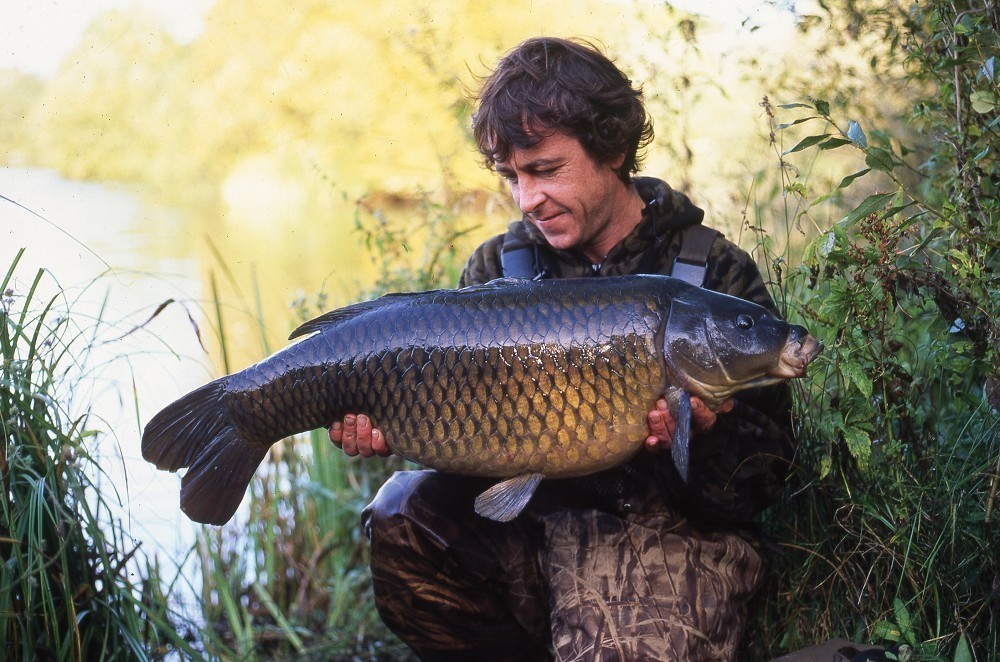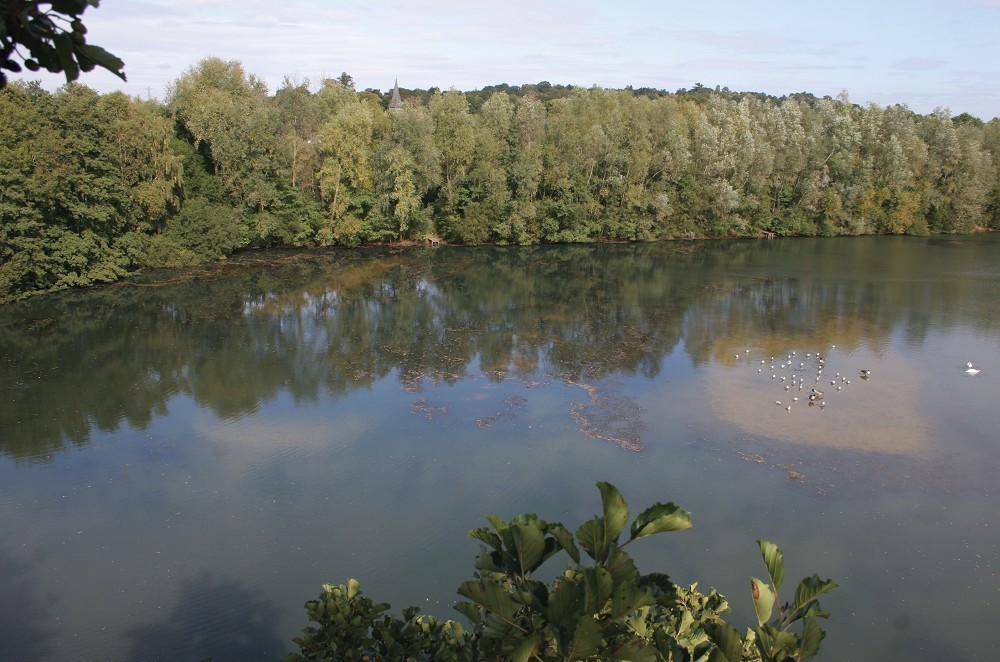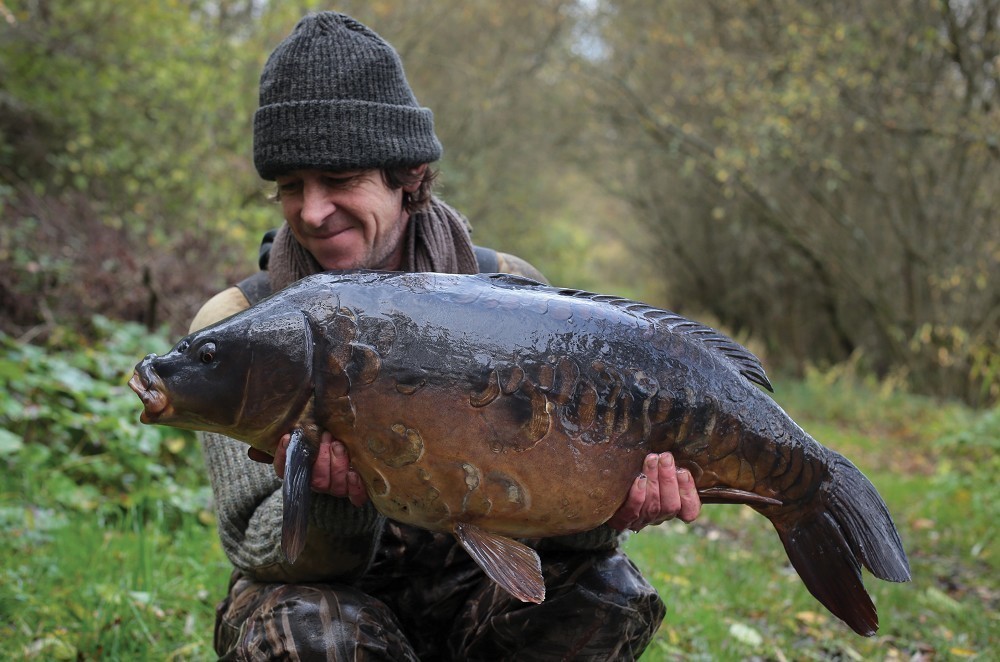
Do fish really like to feed in silt?
Stinking horrible black silt. Terry Hearn gives his thoughts...
Question: Now this is the question I’d like to bring to the panel as it’s something that at times I have zero confidence in. When I say silt, I’m not talking about just any smooth bottom that’s not gravel, because that’s not silt, that’s just the bottom, be it mud or whatever. I’m talking about silt, rotting smelly black silt, the stuff that stains the baits grey and completely overwhelms them with that foul aroma!
My background is gravel pits, I know how to fish them and I know what sort of spots will do bites: clean, hard ones with fish close by! The harder the drop, the more confident I am; the softer, more smelly, the less I am, it’s really that simple. Now I’ve not fished many non-gravel pits but one I fished quite heavily was a small estate lake and again, although I plumbed it intensively at times, in the end the best spots were just the hardest drops that could be found where the fish were. Impossible to find by dragging back a lead, tiny pockets of harder bottom that could only be located by the drop.
My question is this: have you honestly ever found fish to really like to feed in soft, stinking black silt? I can’t think of a single occasion in my own angling where a soft drop out-fishes a crack down consistently. At Yateley it was all about the gravel; I heard all the rubbish about fishing the edge of the spot but the truth was, every morning that it was on, they would bubble as they polished off their chosen pea gravel spot. If I was on them, and I found their polished feeding spot, I caught, it was as simple as that.
I’ve just returned from a monster three-week session abroad and the stinky silt thing reared its ugly head once again. The bottom of this sand pit all felt smooth and clear but if it stank the takes had to come quick before they were too badly tainted, whereas on harder spots, the rigs could be picked up after many hours in the water!
This leads to a second question: what happens to the free offerings that land in the stinky stuff? Fairbrass always says to me, “Do I think they don’t get eaten?” Implying that they do.Darrell Peck
Ahhh, black silt. I’ve already written about this one a couple of times in recent issues and so I won’t spend too much time on it. Like Darrell says, horrible black, foul smelling silt isn’t the one. The fact that it’s foul smelling is often a sign of oxygen depletion, which should be enough in itself to tell us that it’s probably not the best place to put our rigs. If it’s particularly bad then it’s probably without life, other than anaerobic bacteria, which are the cause of that horrible rotten egg/sulphide smell.
Sometimes, areas which are normally fine can go through periods where, all of a sudden, your baits start coming in stinking. Straight after the death of an algae bloom is a perfect example, and interestingly enough this was something I saw on The Car Park Lake around the time that Darrell refers to in his question. Algae dies and sinks to the bottom, covering everything including the gravel. Through these times the raised areas of gravel will end up with the thinnest layer of dead algae, and in these conditions especially they are more likely to be the spots most favourable for feeding. When fishing gravel pits I often prefer to target the firmer, cleaner spots anyway, whatever the water conditions, but in the weeks following an algae bloom I think it’s all the more important. It’s worth learning to recognise these cycles and changes. One sign to look out for here is when the algae turns from green to brown, especially when it becomes streaky, as this is when it’s on its way out and sinking.
On The Car Park I remember how you’d get a trail of fine bubbles emerging from behind the float as you dragged a lead across the bottom, even though you could still feel the tap, tap, tap of gravel through the tip. The bottom was covered in a fine layer of fluffy dead algae which was why I’d still see fish bubbling at dawn, even though I knew they were feeding over the firmer areas. The raised gravel spots will always have the least rotting algae covering them through these times, whilst the deeper depressions are likely to have the most. Imagine shaking up one of those snowy paperweight balls and then watching where most of the snow settles.
I remember Darrell writing about his fishing on The Car Park at the time, and I smiled when he said how he favoured the truly clean areas, as I’d felt the same when I’d caught Heather. If I remember rightly, Darrell said how he liked it ‘pure’, i.e. perfectly clean, and through good use of a marker float he made doubly sure that those were the spots he was fishing. Just feeling a tap, tap, tap on the tip wasn’t enough, it had to be the more pronounced tapping with the least resistance, where less of a bubble trail appeared behind the float and where the covering of dead algae was either non-existent or at its thinnest. It mattered.
 A lovely old common from the Lea Valley. If the silts a bit nasty but they’re still happy to feed in it, then I’ve often found it better to recast more often
A lovely old common from the Lea Valley. If the silts a bit nasty but they’re still happy to feed in it, then I’ve often found it better to recast more oftenOnto the subject of the benefit of recasting more often when fishing silty areas. Whilst on the Police Pit in the Lea Valley, I spent some time fishing a shaded, silty corner which had a thin covering of silkweed over the bottom. I’m not sure that silkweed is the right description for it really as it was darker, tougher and more fibrous than that, but whatever type of weed it was, underneath was rancid, black, stinking silt. I still managed to catch fish there, fishing simple Chod Rigs with a scattering of freebies over the top of the ‘silkweed’, and it was always exciting as whenever the fish turned up I’d see big fizzes coming up all around the baits. Most of the time the action would come very soon after the fish arrived on the scene, but if I hadn’t had a take within an hour or so of them starting to bubble up amongst the ‘silkweed’ then I always found it was better to re-do the rods.
Whenever I reeled them in after the fish had been turning it over the hookbaits would come in darkened off, smelling horrible and often dripping in black slimy weed. My fingers would actually stain black through plucking the stuff off. Putting the rods out and then hoping for a take at dawn just wasn’t the one in that situation, instead it was better to get up early and re-do the rods in the half light, and then again and again every so often throughout the day, as once they’d been in the water anymore than a couple of hours they never seemed to go.
As for free offerings which land in the stinky stuff, I guess it depends just how stinky it is. If it’s really bad, like uninhabitable, then it’s likely that they’ll just gas up and float to the surface after three or four days, providing it’s an active freezer bait without any preservatives of course, just as they would on any bottom if left uneaten. One of the most disheartening things in carp fishing is dropping into a swim which you’ve pre-baited a few days earlier, and then soon after getting the rods out noticing that the gulls are circling and batting the surface over your spot. I’ve had it happen plenty of times myself, and when it does I straightaway know that it’s already time for a move. This is the thing: baits which float to the surface rarely make it into the edge, they get eaten by birdlife, and so it’s good to recognise when it’s happening out in the pond.
 I remember Darrell saying how he favoured the truly clean areas (Picture courtesy of Subsurface Journal)
I remember Darrell saying how he favoured the truly clean areas (Picture courtesy of Subsurface Journal)



